Care Of Gladiolus - How To Grow Gladiolus In Your Garden
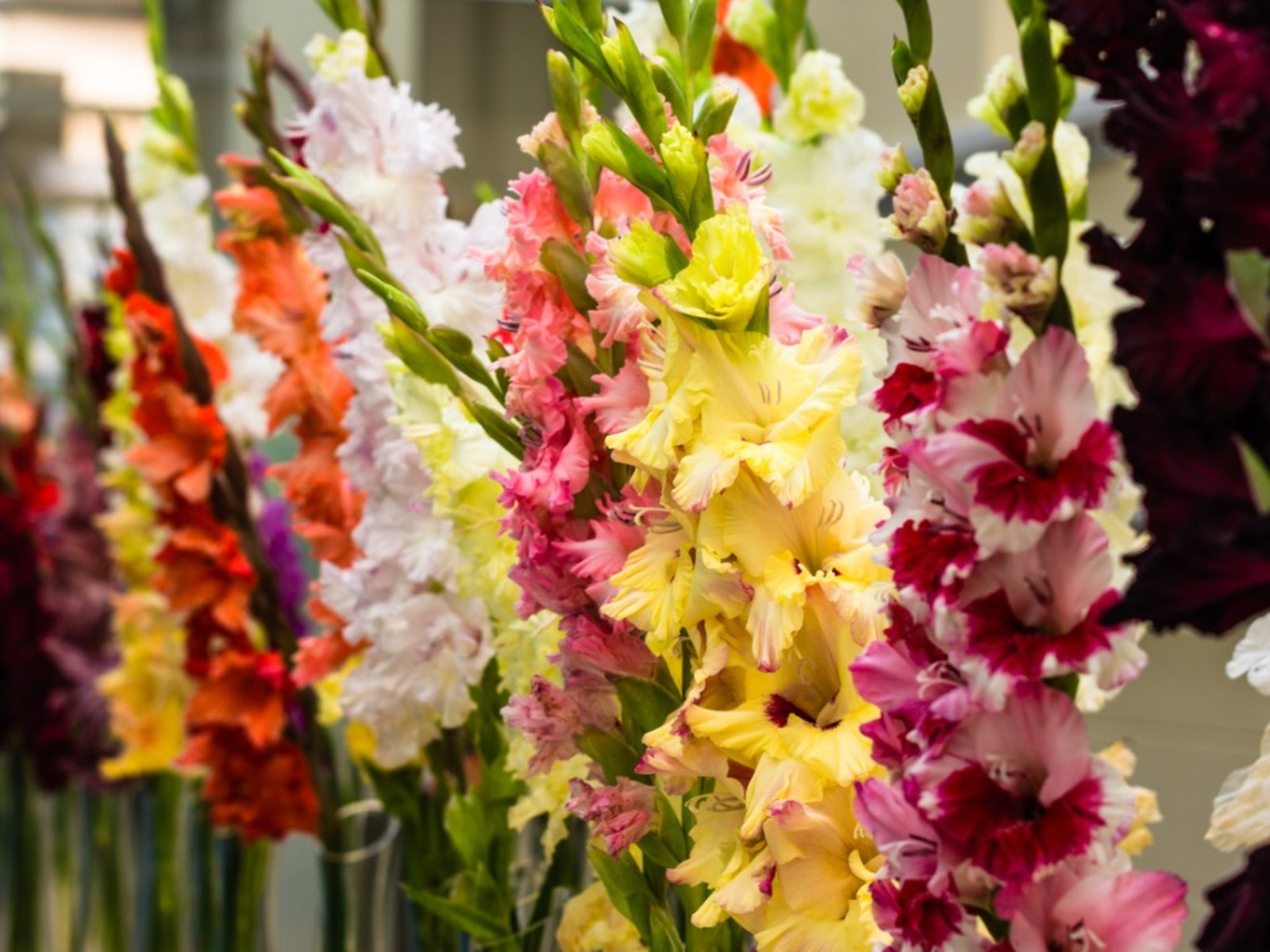

Gladiolus plants grow wonderfully in the warm weather of summer. You can produce these flowers in sequence by planting some corms every few weeks or so. Learning how to take care of gladiolus will reward you with a huge array of colors and they also work out great for cut flowers. Let's look at how to grow gladiolus.
How to Grow Gladiolus
Gladiolus corms look like oversized crocus corms. They have a brown fiber wrapper with a small flat bottom. Sometimes they already have pointy shoots showing at the top. Follow these growing tips to help with care of gladiolus:
- Gladiolus prefer well-drained and even sandy soil. They also like sunny locations.
- You will want to plant the gladiolus deeper than usual because they have a tall sheaf of leaves. This will help anchor them against strong winds that might blow them over to the ground.
Gladiolus - How to Plant
With gladiolus, how to plant is just a few simple steps:
- First dig a trench about 8 inches (20 cm.) deep. Make it long enough that you can space your corms about half a foot (15 cm.) apart. That spacing might seem a bit strange to you, so placing them in a semi-circle or oval will help. Make sure the space is large enough to handle about ten corms for a nice display.
- You will want to fertilize the corms with 5-10-10 or 5-10-5 fertilizer. Put the recommended amount in the bottom of the planting area but be sure to mix the soil and fertilizer well so you don't burn the corm. Add a layer of unfertilized soil before placing the corm into the trench.
- You should start your planting of your gladiolus in midspring. From that point, make some new plantings every two weeks. They take 70 to 100 days to grow and flower so planting every couple of weeks gives you flowers right on through summer. If these flowers will be exposed to wind, you will definitely want to stake them.
- Stop planting your gladiolus in summer, around mid-July.
- Keep your gladiolus watered well during their growing period and make sure to mulch the soil around them to keep it moist.
Gladioli are only completely hardy in USDA plant hardiness zones 8 to 11. In zones 6 to 7, they thrive if the bulbs are protected by a thick mulch throughout the winter. Proper care of gladiolus requires the use of fertilizer. As they come up, you can fertilize the new gladioli batches when you see the flower spikes start to show. After you pick the flowers, you can fertilize again. When you fertilize, just add the granules next to the flower, then scratch the soil with a cultivator to mix it a little.
How to Care for Gladiolus in the Winter
Rather than leaving the corms in the ground to winter, you can dig the corms up for storage four to six weeks after you pick the flowers.
- Dig the corm up and shake as much soil as you can off the corm. Trim back the leaves to within an inch (2.5 cm.) of the corm itself.
- Let the corm dry up for about a week. After that, you can brush off remaining soil.
- Store your gladiolus in a dry, dark, cool place in a mesh bag or old pantyhose to prevent moisture from aiding mildew to grow. Also protect them when you store them because mice love gladiola bulbs.
Gladiolus plants are a lovely addition to any garden. Knowing how to grow gladiolus and proper care of gladiolus will ensure that these delightful flowers will grow well in your garden.
Gardening tips, videos, info and more delivered right to your inbox!
Sign up for the Gardening Know How newsletter today and receive a free copy of our e-book "How to Grow Delicious Tomatoes".

Heather Rhoades founded Gardening Know How in 2007. She holds degrees from Cleveland State University and Northern Kentucky University. She is an avid gardener with a passion for community, and is a recipient of the Master Gardeners of Ohio Lifetime Achievement Award.
-
 4 Superfast Composting Methods: Turn Waste Into Garden Gold In 30 Days Or Less
4 Superfast Composting Methods: Turn Waste Into Garden Gold In 30 Days Or LessTry the fastest composting methods to turbocharge your pile and transform kitchen scraps and garden waste into finished compost in just a few weeks.
By Mary Ellen Ellis
-
 Best Spider Plant Soil – Complete Soil Guide And Expert Tips For Keeping Plants Happy
Best Spider Plant Soil – Complete Soil Guide And Expert Tips For Keeping Plants HappySpider plants are fun and easy plants to grow, but what is the best soil for a spider plant? Selecting the right soil is important so they can thrive.
By Bonnie L. Grant
-
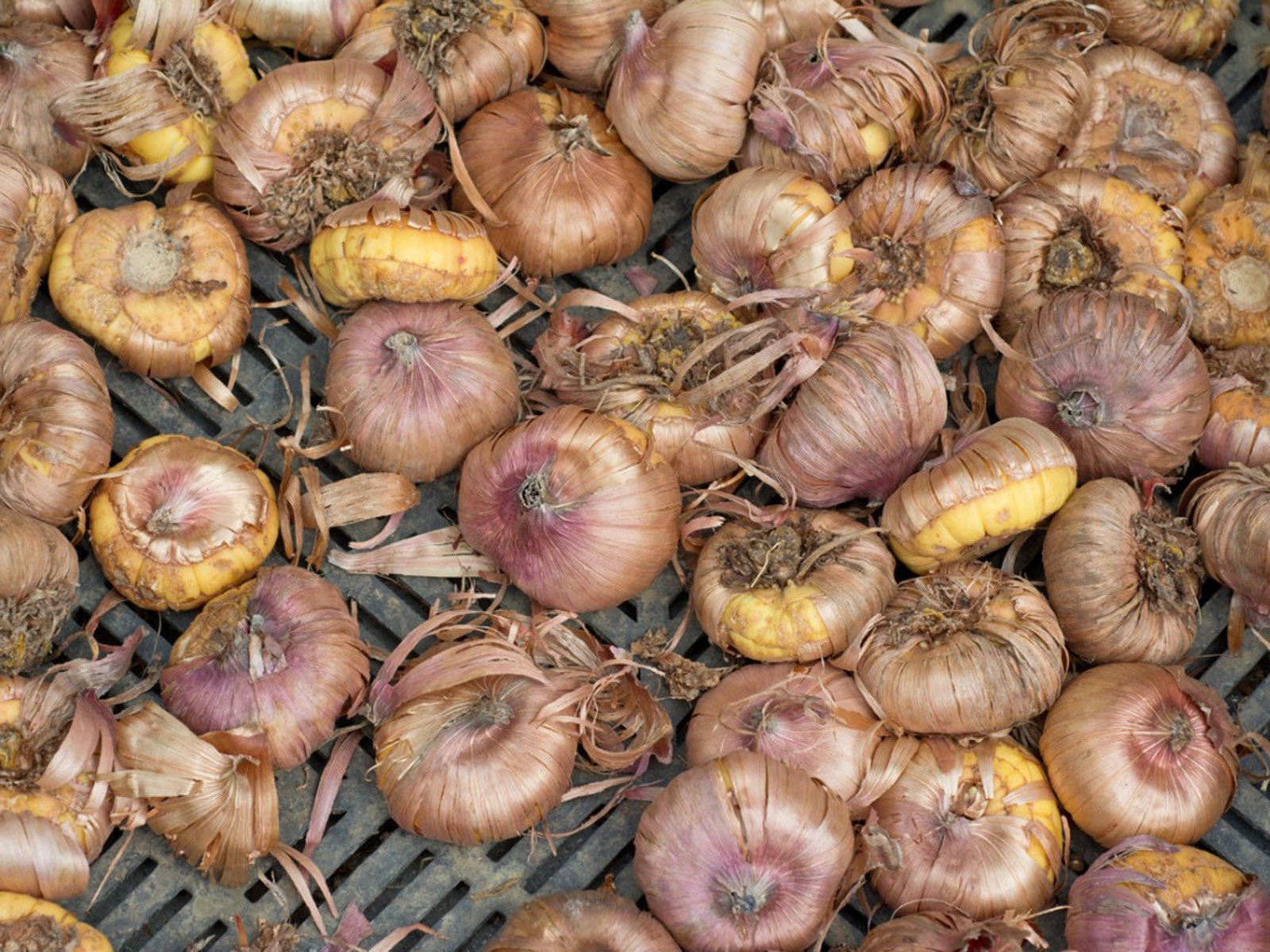 Gladiolus Plants With Scab – Controlling Gladiolus Scab On Corms
Gladiolus Plants With Scab – Controlling Gladiolus Scab On CormsIf you are growing gladioli, you’ll want to know about gladiolus scab. For more information and tips on prevention and control, click here.
By Teo Spengler
-
Gladioli Mosaic Virus – Managing Symptoms Of Gladiolus Mosaic
Gladiolus blooms are featured in many cutting gardens for mid-summer bouquets. When issues like mosaic occur, this can naturally be alarming. Good cultural control can help prevent mosaic virus in gladiolus. Learn more in this article.
By Susan Albert
-
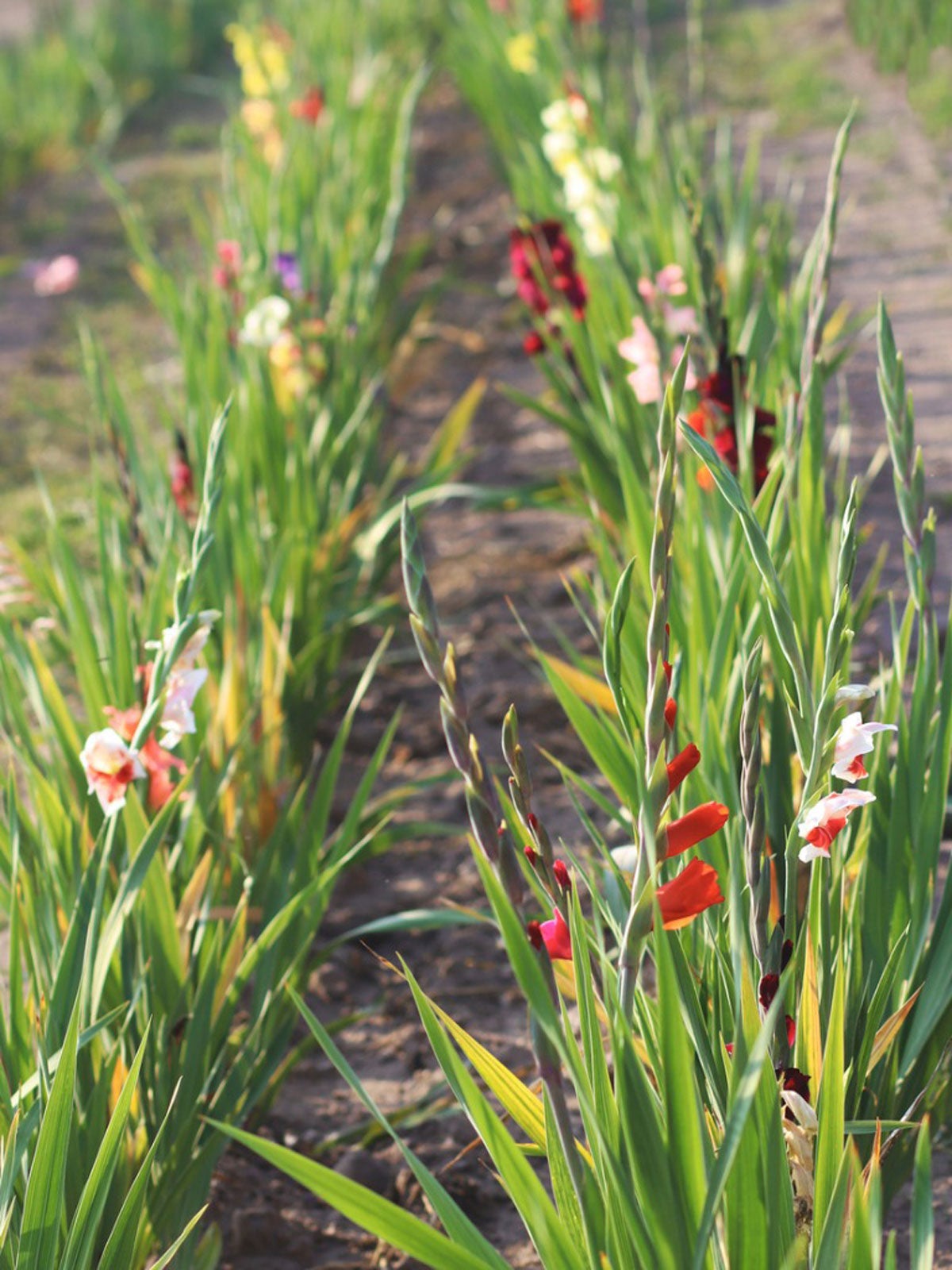 Botrytis On Gladiolus Plants: How To Control Gladiolus Botrytis Blight
Botrytis On Gladiolus Plants: How To Control Gladiolus Botrytis BlightGladiolus botrytis diseases are not uncommon, so knowing the signs and how to manage them is important. Learn about gladiolus blight here.
By Mary Ellen Ellis
-
Treating Glads With Fusarium: How To Control Gladiolus Fusarium Rot
If the corms of your unplanted glads appear discolored and unhealthy, they may be infected with gladiolus fusarium rot. Learn more about fusarium wilt and rot on gladiolus plants in this article to see if your corms can be saved.
By Becca Badgett
-
Gladiolus Leaf Diseases: What Causes Leaf Spots On Gladiolus Plants
When kept healthy and disease free, gladiolus plants will return year after year. Issues like gladiolus leaf spot, however, may cause decline of your plants. Becoming familiar with the signs of gladiolus leaf diseases is important in preventing spread. Learn more here.
By Tonya Barnett
-
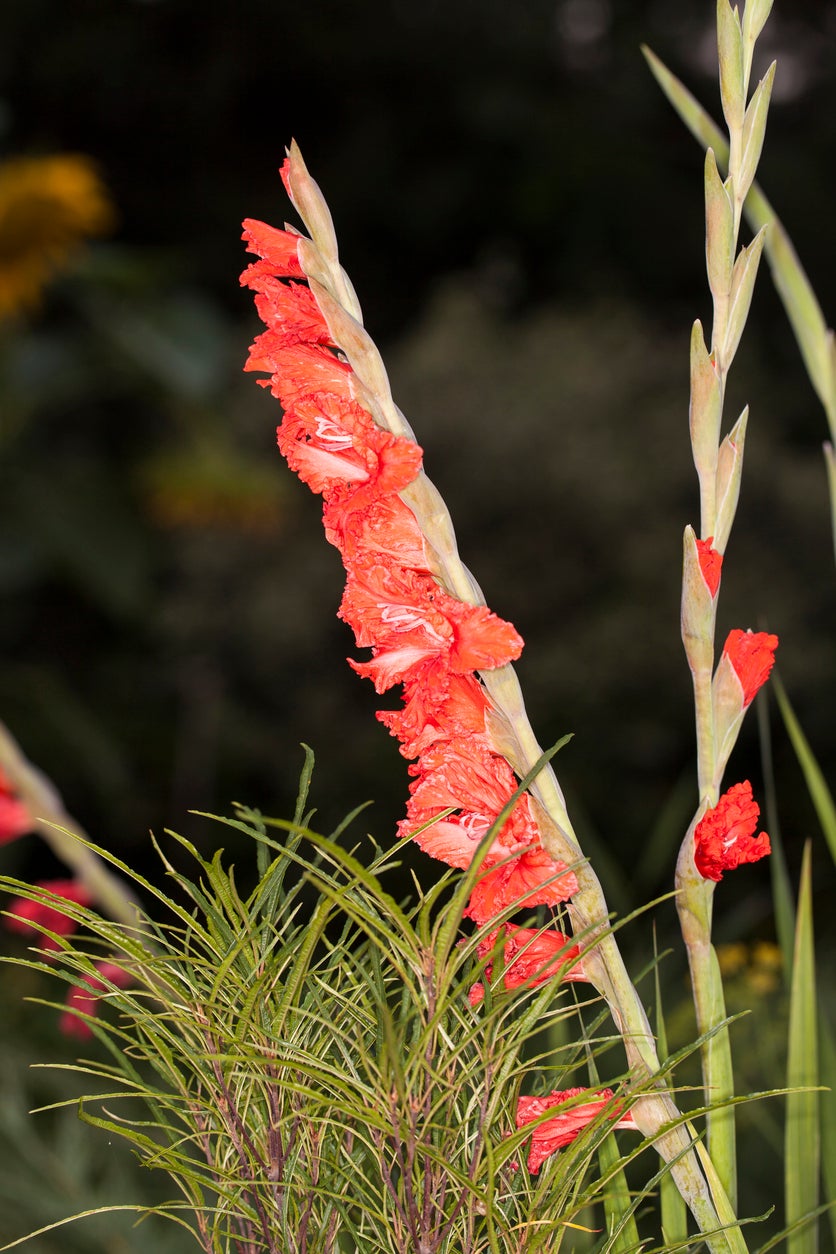 Is Your Gladiolus Falling Over – How To Stake Glads In The Garden
Is Your Gladiolus Falling Over – How To Stake Glads In The GardenGrowing glads is so simple, but sometimes the tall gladiolus falling over in the garden can be troublesome, if not unattractive. Luckily, with a little added support, this can be easily remedied. Click this article for additional information.
By Mary H. Dyer
-
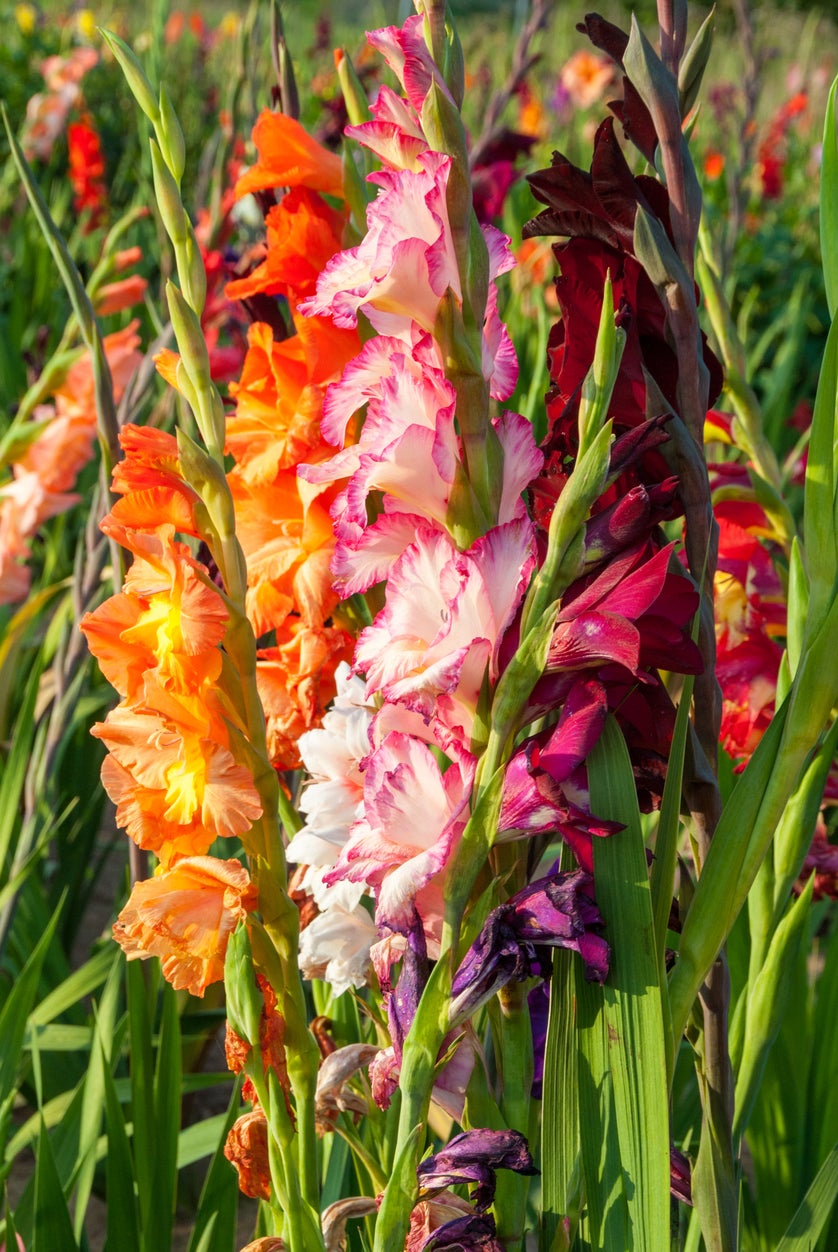 Gladiolus Are Falling Over – Learn About Staking Gladiolus Plants
Gladiolus Are Falling Over – Learn About Staking Gladiolus PlantsProlific bloomers they are, but gladiolus plants falling over is not uncommon. Staking gladiolus plants will keep their brightly colored heads from dipping or breaking, and there are any number of items that can be used as gladiolus plant stakes. Learn more here.
By Amy Grant
-
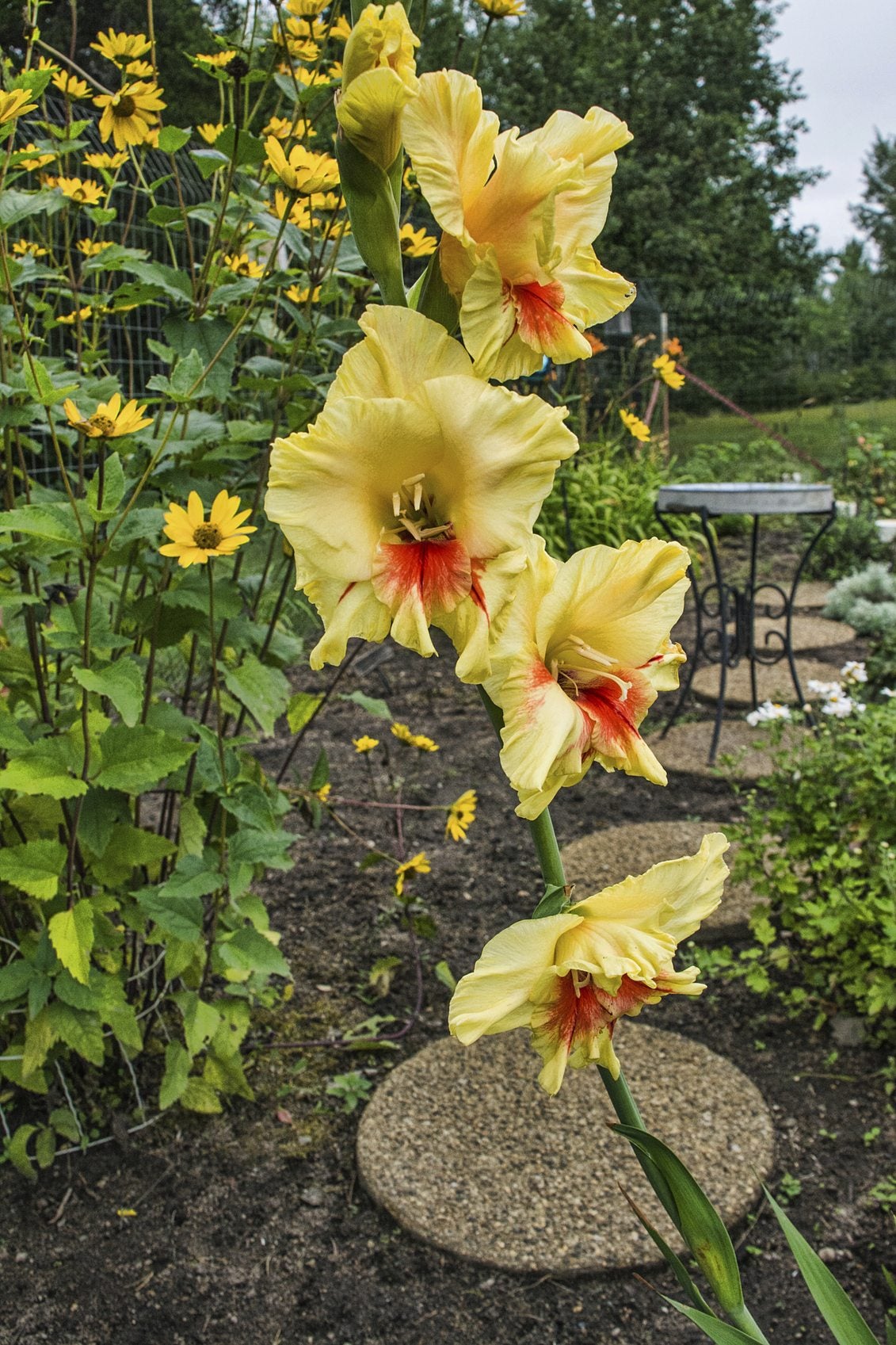 Companion Planting With Gladiolus: Plants That Grow Well With Gladiolus
Companion Planting With Gladiolus: Plants That Grow Well With GladiolusAs well as bouquets, gladiolus looks amazing in flower beds and along garden borders. But what are some good companion plants for gladiolus? Click this article to learn more about plants that grow well with gladiolus.
By Liz Baessler